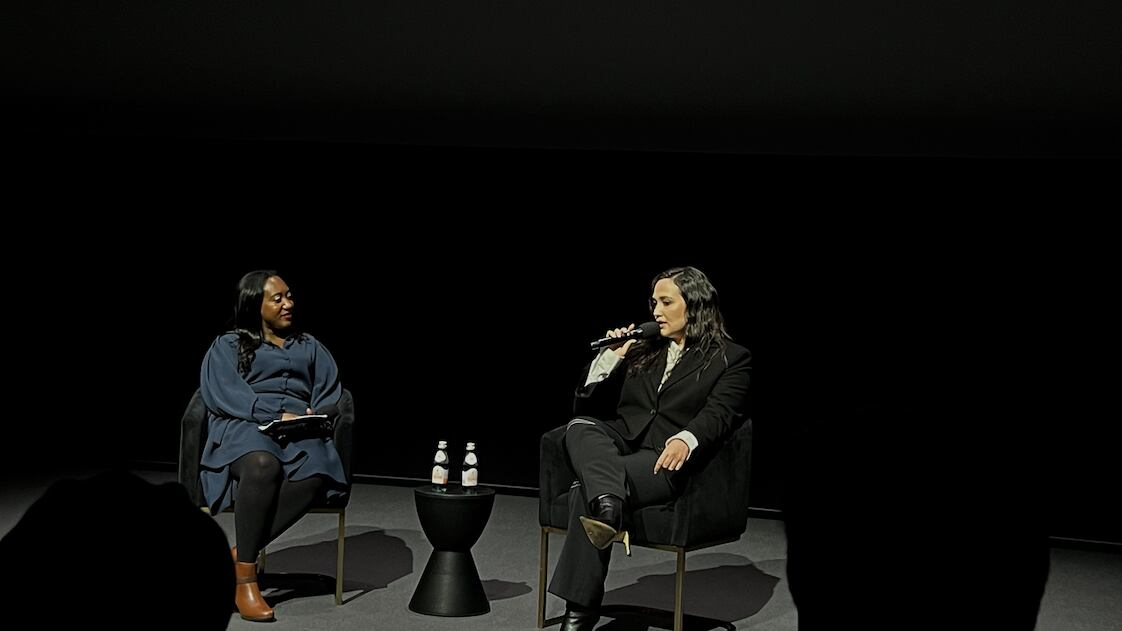In 1918, Minnie Smith, a full-blood Osage native, died of what doctors deemed a “peculiar wasting illness.” In the next five years, her sister Anna Brown was found murdered, her mother Lizzie died of a similarly suspicious illness, and her other sister, Rita Smith, perished in a home explosion. This was not the only native family targeted, but rather a part of at least 60 Osage people that had gone missing or were murdered in Oklahoma between 1921-1926, in what is known as the “Reign of Terror.”
In 2023, Martin Scorsese unveiled “Killers of the Flower Moon,” a biographical epic spanning 3 hours and 26 minutes, featuring performances by Leonardo DiCaprio (Earnest) and Lily Gladstone (Mollie). This Tuesday, the Academy Museum of Motion Pictures in collaboration with Apple, hosted a special screening of the film followed by a Q&A with Gladstone and Senior Entertainment Writer at Variety, Angelique Jackson. Gladstone shared with the audience the creative process that brought this film to life, and the unique steps needed to represent this story with “accuracy and dignity”.
Earlier in the year, Gladstone made history by becoming the first indigenous person to secure a Golden Globe for Best Actress. Now, Gladstone is the first indigenous woman to nab an Oscar nomination for Best Actress and may be the first to secure the coveted accolade itself.
During her acceptance speech for the Golden Globe award, Gladstone commenced by speaking in the Blackfeet language and expressed gratitude to her mother. “Even though she isn’t Blackfeet herself, she dedicated herself tirelessly to ensuring our language found its place in our classrooms, allowing me to have a Blackfeet language teacher while growing up,” Gladstone said.
Given the profound significance of her own tribe’s native language in her life, it was of particular importance for Gladstone to collaborate with Osage teachers and translators on the script. During the Q&A session, she revealed that numerous revisions were made to the original script to more accurately reflect the Osage language and way of life. Certain dialogues and scenes had to be reimagined so they could be more authentically conveyed in the language.
Gladstone remarked that it was so critical that an abundance of care and time was spent working on the Indigenous language in the film because it is a “reflection of the people’s relationship to the land, the creatures, the elements that exist in the land and kinship terms.”
Gladstone also delved into the pivotal role of the Osage language within the narrative, highlighting its significance in shaping the dynamics between the indigenous community and the white people. With the Osage holding considerable wealth, mastering their language became a powerful tool for the white population. William “King” Hale (played by Robert De Niro), proficient in Osage, leveraged this skill to forge connections with the natives, exploiting these relationships for personal gain.
However, Gladstone pointed out a stark contrast in Mollie’s Husband, Earnest’s, approach to the language. Despite the tragedy that unfolds, the film strives to still depict the love shared between Mollie and Earnest. Earnest’s dedication to learning the language emerges as a gesture of love, a means to bridge the gap and deepen his understanding of Mollie.
In conversation with Osage people in the making of this movie, they advised the actors and show runners to “remember that Earnest and Mollie loved each other,” Gladstone said.
Language, particularly indigenous languages, “intricately defines the social dynamics among individuals,” according to Gladstone. While Gladstone is not of Osage descent, she uniquely understands the value language holds in the preservation of indigenous history and culture. In this narrative, the deliberate utilization of language underscores its profound importance. Collaboration among translators, historians, linguists, actors, the creative team and notably the Osage community, contributed to an accurate portrayal and helped the audience develop a deeper appreciation for the cultural intricacies embedded within it.
Be sure to tune into the Academy Awards on March 10th, and see if Gladstone can continue her award season winning streak and make history for her role in “Killers of the Flower Moon.”
